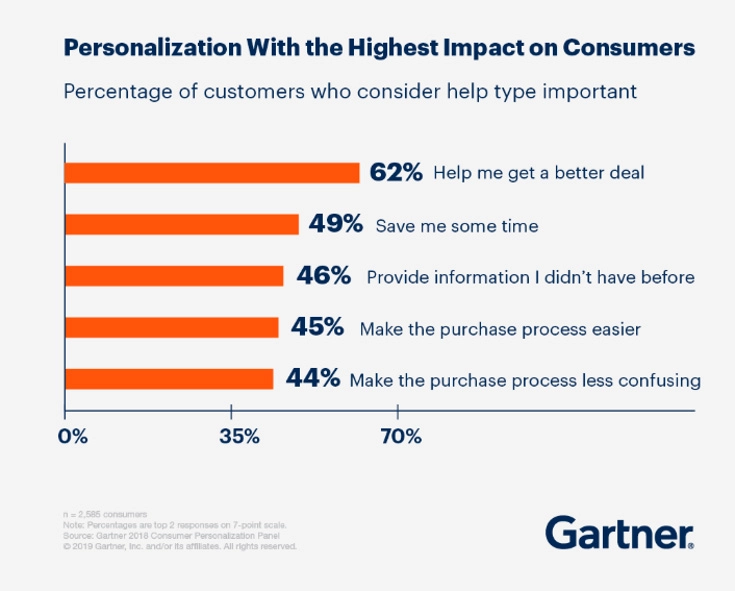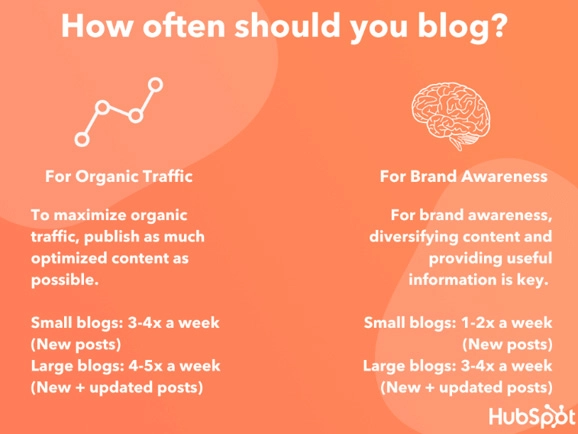
Introduction
It’s the beginning of the year; the start of another new quarter…and what better time to reevaluate your business strategies than now? To remain competitive, you must evaluate whether your old strategies are steering you towards or away from revenue success.
Predictions from Walker information show that by 2020, customer experience, and not price or product, will be the number one brand differentiator. If your lead generation strategies are not living up to the rate of customer behavior evolution, then it’s time to adopt new marketing approaches and technologies to help you keep up.
That said, below are some ideas to spice up your lead generation approach and help improve your ROI.
Top 10 Lead Generation Ideas for Small Businesses
Lead generation is the biggest challenge for 61% of businesses (Source: HubSpot’s State of Inbound report.)
How can you overcome this challenge and maximize your revenue potential? By implementing the following strategies:
1. Use Gated Content Strategically
Your website will attract a lot of visitors, but not all of them will hold the same level of interest in your product. Gated content is an effective way to identify web visitors who possess a deeper interest in dealing with your business. To access your gated content, such visitors will give you their email addresses, which you can then use to create relationships with them (the visitors) and nurture them into leads.
Gated content can be a powerful way to generate more leads and increase conversions, if it is implemented in the right way. A lot of that implementation has to do with choosing the right technology to automate the process. For instance, one company increased conversions by 100% using gated content through OptinMonster’s content locking.
Additionally, gated content will work better if you have already published content and there are indicators that visitors enjoy it. Vanity metrics such as shares, follows and likes are a good indicator of how much readership your content is getting. Comments will also tell you something about visitors’ level of engagement, or whether your content addressed a pain point.
2. Personalize Your Offering
A survey conducted by SalesForce on 7,000 consumers found that over 50% of people will share their personal data in exchange for product recommendations, a customized shopping experience or personalized offers.
The digital technologies in use today make it possible to collect consumer data on multiple fronts, to conduct analysis to find out what individuals want and tailor advertising to meet those needs.
As you ideate your personalization strategy, the focus should be on the customer and not you or what your competition is doing. Gartner maintains that personalization that focuses on what the consumer wants delivers positive outcomes on commercial goals.

Figure 1: Personalization should focus on what the customer wants.
Source: Gartner
3. Use Social Media to Build Relationships
Until now, you may have only used social media to publish and promote your content. This is okay, and it may even have worked out well for you. But over and above that, social media can be a great way to increase your level of engagement with your audience. Statistics show that on average, people spend over 2 hours daily on social media. If you take advantage of this, you can increase your level of interaction with audience members and thereby cultivate meaningful leads.
Below are examples of how you can leverage social media channels:
Create a FaceBook group to discuss matters relevant to your audience. If you don’t want to create a group, you can join an existing one and start voicing your opinion. You could generate a lot of new eyeballs for your content in this way.
Hashtags will help you identify individuals interested in your topic, or to find topics relevant to your targets. You can also use hashtags on Instagram.
Over 80% of businesses leads are generated through LinkedIn. It is a great platform for brands to communicate their offering and connect with prospects, so if you don’t have a business page on LinkedIn, it’s time to start interviewing lead generation companies for small businesses to do a page for you and to help you figure out how to go about social selling.
Note: The same prospects you are targeting via social media probably receive a lot of connection requests from other companies. When you identify a lead on social media, send them a personalized connection request. Any content you send them should also be personalized.
4. Generate More Reach with Content That Adds Value
Content is the driving force behind successful online marketing. With content, you can build your credibility as an industry expert, increase your reach and generate more exposure for your brand. However, this will only happen if your content is meaningful and relevant. If your content informs and educates your audience, they will consume it and hopefully subscribe to your platforms to get more.
Content is just as invaluable to a b2b business as it is for b2c businesses. B2b customers use content for research and up to 59% visit 2 to 3 websites before making a purchase decisions. Considering a b2b buyers research their topic widely, you are likely to be more helpful to their research efforts by producing content that cover a whole topic. As you produce content, don’t forget video. in a study by Forbes, 65% of senior executives said they have visited a website after consuming video content.
It’s also important to point out that frequency of publishing will increase your content marketing success. Below is a guideline from Hubspot on how often small businesses should blog. Note that this is only a guideline, therefore you should consult lead generation companies for small businesses to assist you create a more personalized content strategy for your business.

Figure 2: Guidelines for blogging frequency
Source: HubSpot
5. Take Advantage of Customer Referrals
Referral programs can work wonders for your lead generation efforts because of the power of “word of mouth”. When a customer refers another potential customer, they are essentially saying: “this brand works for me. You have the same pain point that I had, therefore it will work for you”.
Below are statistics that show the power of referrals over other marketing methods.
Note: Referrals are more effective when you already have a customer base. Remember to show your appreciation by incentivizing referrals.
6. Create a Landing Page for Each Offering
If your offerings are crammed into the same landing page, you may be missing out on a lot of leads. Having multiple offers on the same page can lead to a 266% drop-in conversion rates, according to split test experiments.
Each landing page should address a single goal. The message conveyed by your CTA should also support that one goal. It’s disappointing for visitors to click on an advert only to realize that the page doesn’t match the ad copy.
Besides benefits such as increasing search engine ranking, landing pages are important for lead generation because:
- They keep your budget focused and lead visitors to the right page, hence improve the ROI of your paid advertising campaigns
- They help with customer segmentation. Contact information collected through a page with one offering shows that the visitor has a clear interest in that product.
- You can A/B test your ads using landing pages
7. Invest in Analytics
Predictive analysis is the key behind understanding what visitors are doing on your website. For instance, why are you attracting so many visitors but only converting a small percentage of them?
There are many tools, including google analytics, that track metrics such as time spent on page, and activities such as downloads, pages viewed, etcetera. Other tools allow you to capture visitor activity and replay the session to identify reasons behind poor conversion rates. Such tools (known as session replay tools), take you through a visitor’s actions from when they first land on your page to when they drop off.
When you know the actions preceding “bounce”, you can take appropriate actions to improve conversion. Session replay tools are also useful for A/B testing, as you can track visitor interaction with versions of the same campaign.
8. Make Your Website Mobile-Friendly

Figure 3: Percentage of B2b search queries conducted on mobile continue to rise(source: ThinkwithGoogle)
A 2016 study conducted by google and Boston Consulting group predicted that by 2020, 70% of b2b customers will be conducting their search queries on their smartphones. This prediction is bound to come true, as older generations become more comfortable with the idea of the smartphone-as-a-work-tool, and younger, digitally-savvy generations enter the workforce.
90% of respondents from the same study said that they would buy again from a vendor, if they liked their mobile experience.
Given such statistics, it’s important to improve the mobile experience by doing the following:
- Design pages to fit on mobile screens and utilize mobile-optimized layouts for all content types
- Work on faster load times
- Take advantage of location capabilities in your ads and campaigns
- Create a mobile app to improve your connection with customers and enable faster ordering
9. Automate
Automation is necessary for running lead generation campaigns. Automation can happen in various ways:
- Integrating automation software into your CRM will improve lead qualification
- Automating social media sharing ensures content goes out on time
- Performance monitoring through tools like Facebook Analytics, Google Analytics, Moz, among others, ensures you don’t miss any crucial customer data
- Automated email marketing campaigns are well targeted and run on schedule
- Using AI to tracking consumer behavior and for retargeting. AI tools like chatbots are also important for providing speedy and efficient customer service
At the start of your campaign, marketing automation software will help you to reach your target audience on time and with speed. Once your content starts attracting eyeballs, you will be swamped by the sheer amount of traffic generated. But if you have automation software, you can capture, segment, and score leads a lot easier.
A good example of automation success is Thomson Reuters, who generated 23% more leads and 175% more revenue. (data via VentureHarbour)
10. Work on Creating a Stronger Online Presence Beyond Your Owned Media
Networking is an important part of expanding business reach. While your website will boost your professional image, restricting your marketing to your website will limit your business chances at connecting with other like-minded professionals. Some creative ways to increase brand reach beyond your website include:
- Guest blogging on authority sites
- Giving interviews
- Showcasing your expertise on platforms like Quora, by answering questions relevant to your target audience
You can also go a step further by hiring an influencer. An influencer doesn’t necessarily have to be an A-list celebrity with millions of followers. If you are targeting a niche market, influencers in that area are likely to have limited reach, but this does not diminish their level of influence. The key is to look at the level of engagement that they have with their audience and find a way to leverage that.
Bottom Line
According to a survey conducted by HubSpot, 85% of b2b marketers view lead generation as their most important goal. This, however, is easier said than done. As mentioned in Point 1 above, 61% of marketers still have challenges generating traffic and leads. The story is the same on the sales front. Although closing leads remains the top priority among sales people, 40% of sales people have difficulty with prospecting.
This should however not dissuade you from doing everything you can to generate more leads. With a properly planned strategy that incorporates the methods discussed above, your efforts should start to pay off if you are consistent.
Lastly, be honest with yourself. Lead generation is a time-consuming and skill-intensive endeavor. Attempting it on your own could overwhelm you if you don’t possess these resources. Instead of trying to figure out things on your own, we encourage you to leave the burden of lead generation to lead generation companies for small businesses.
Our blog
Latest blog posts
Tool and strategies modern teams need to help their companies grow.

B2B companies must generate leads that are ready to buy their products in order to me...

In the absence of a constant flow of leads, sales teams can't meet their targets and ...

Podcasts and webinars are powerful tools that marketers can use to reach new audience...




